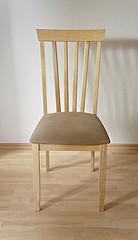Wooden Huts
 Manufacturing techniques of wooden huts wooden cabins, in contrast to the more modern metal, for many years longer used as temporary accommodation for construction, repair, and other technical and production work. During that time used various manufacturing techniques huts made of wood. At the moment there are three main methods of manufacture of wooden huts. Flush wooden cabins main advantage of panel wooden huts – a very low cost. In the manufacture of timber frame huts use cheap materials: outside – non integral lining inside – cover made of hardboard (MDF) flooring boards, insulation – fiberglass or foam.
Manufacturing techniques of wooden huts wooden cabins, in contrast to the more modern metal, for many years longer used as temporary accommodation for construction, repair, and other technical and production work. During that time used various manufacturing techniques huts made of wood. At the moment there are three main methods of manufacture of wooden huts. Flush wooden cabins main advantage of panel wooden huts – a very low cost. In the manufacture of timber frame huts use cheap materials: outside – non integral lining inside – cover made of hardboard (MDF) flooring boards, insulation – fiberglass or foam.
However, for the same reason panel wooden cabins rather short-lived. The design of timber frame huts has no ribs, which leads to rapid distortion cabins. Timber framed wooden cabins most expensive, with very strong and durable wooden cabins are made of softwood lumber section of about 100×150 mm. Seams in the office container insulated lnovatinom, tow, or other suitable materials. External cladding lining in the manufacture of square log huts often not applied. Prefab wooden cabins Most popular wooden cabins, the most profitable in terms of price and quality. At the heart of frame huts lay a framework of timber 50×50 mm, which provides the necessary stability.
Outside cabins edged lining inside – clapboard, hardboard or plywood. By the way, the material inside sheathing largely determines the cost of frame wooden huts. Most prized wall paneling, paneling because of hardboard and plywood is less reliable and durable (over time due to moisture or "reference" thin walls of cabins sheets may start to deform: warp, swell, etc.). Floor and ceiling in wood frame office container makes a double (rough board + coating material). The entire perimeter, under the outer layer of skin lay mineral insulation and waterproofing materials (plastic sheeting or asphalt), preventing dampness finishing materials and extend the life of wooden cabins.